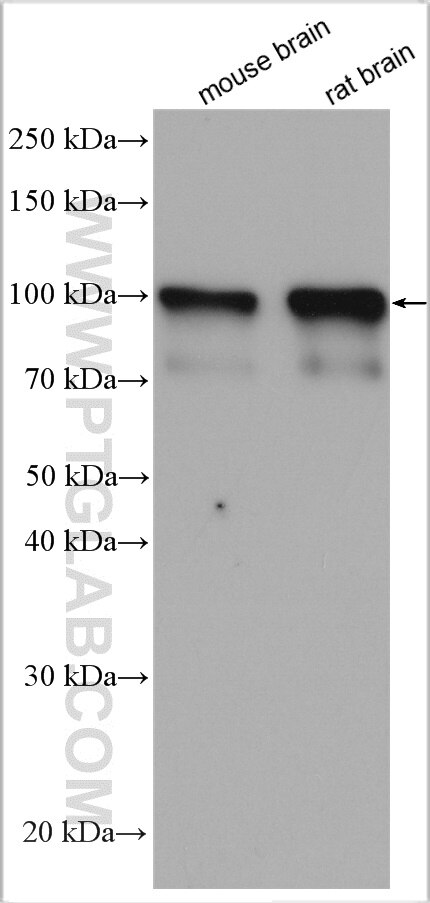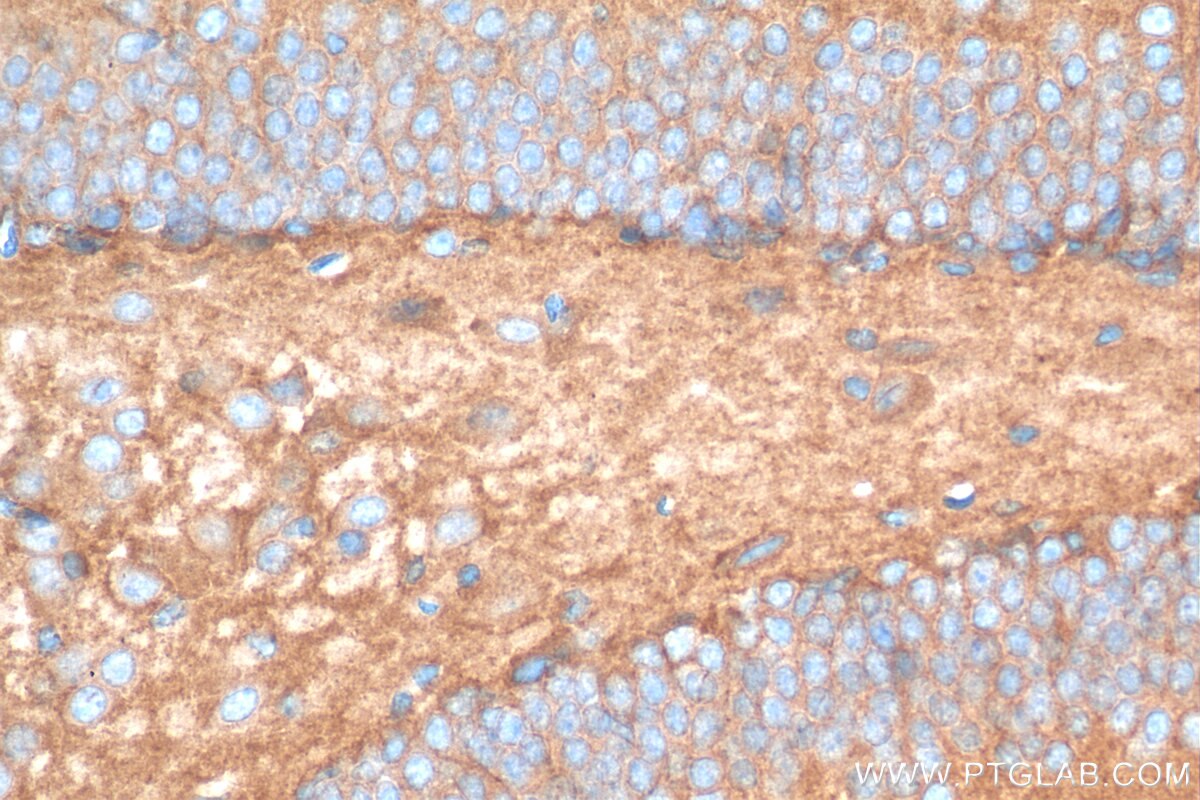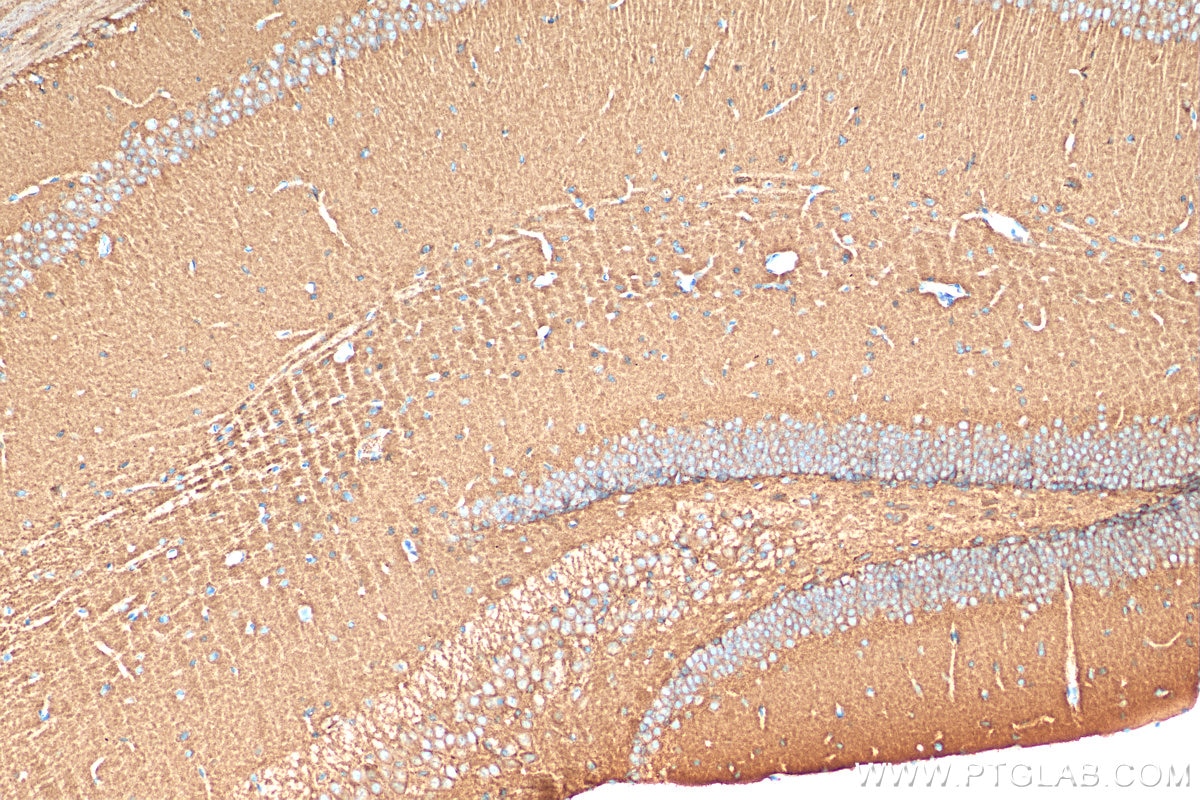NLGN3 Polyklonaler Antikörper
NLGN3 Polyklonal Antikörper für WB, IHC, ELISA
Wirt / Isotyp
Kaninchen / IgG
Getestete Reaktivität
human, Maus, Ratte
Anwendung
WB, IHC, ELISA
Konjugation
Unkonjugiert
Kat-Nr. : 29319-1-AP
Synonyme
Geprüfte Anwendungen
| Erfolgreiche Detektion in WB | Maushirngewebe |
| Erfolgreiche Detektion in IHC | Maushirngewebe Hinweis: Antigendemaskierung mit TE-Puffer pH 9,0 empfohlen. (*) Wahlweise kann die Antigendemaskierung auch mit Citratpuffer pH 6,0 erfolgen. |
Empfohlene Verdünnung
| Anwendung | Verdünnung |
|---|---|
| Western Blot (WB) | WB : 1:2000-1:10000 |
| Immunhistochemie (IHC) | IHC : 1:250-1:1000 |
| It is recommended that this reagent should be titrated in each testing system to obtain optimal results. | |
| Sample-dependent, check data in validation data gallery | |
Produktinformation
29319-1-AP bindet in WB, IHC, ELISA NLGN3 und zeigt Reaktivität mit human, Maus, Ratten
| Getestete Reaktivität | human, Maus, Ratte |
| Wirt / Isotyp | Kaninchen / IgG |
| Klonalität | Polyklonal |
| Typ | Antikörper |
| Immunogen | NLGN3 fusion protein Ag30536 |
| Vollständiger Name | neuroligin 3 |
| Berechnetes Molekulargewicht | 94 kDa |
| Beobachtetes Molekulargewicht | 90-110 kDa |
| GenBank-Zugangsnummer | BC051715 |
| Gene symbol | NLGN3 |
| Gene ID (NCBI) | 54413 |
| Konjugation | Unkonjugiert |
| Form | Liquid |
| Reinigungsmethode | Antigen-Affinitätsreinigung |
| Lagerungspuffer | PBS with 0.02% sodium azide and 50% glycerol |
| Lagerungsbedingungen | Bei -20°C lagern. Nach dem Versand ein Jahr lang stabil Aliquotieren ist bei -20oC Lagerung nicht notwendig. 20ul Größen enthalten 0,1% BSA. |
Hintergrundinformationen
Neuroligin3 (NLGN3) belongs to the neuroligin family, a class of postsynaptic cell adhesion molecules that regulate synapse organization and dendritic outgrowth, and NLGN3 missense variants have previously been associated with autistic spectrum disorder (ASD).
Protokolle
| PRODUKTSPEZIFISCHE PROTOKOLLE | |
|---|---|
| WB protocol for NLGN3 antibody 29319-1-AP | Protokoll herunterladen |
| IHC protocol for NLGN3 antibody 29319-1-AP | Protokoll herunterladenl |
| STANDARD-PROTOKOLLE | |
|---|---|
| Klicken Sie hier, um unsere Standardprotokolle anzuzeigen |
Rezensionen
The reviews below have been submitted by verified Proteintech customers who received an incentive for providing their feedback.
FH Wojciech (Verified Customer) (07-23-2025) | Used for WB and 1:1000 dilution. Detected a clear band at around 75 kDa.
|
FH Wojciech (Verified Customer) (07-10-2025) | The antibody was used for Western blotting in cell lysates. A prominent band was observed at the ~75 kDa. While some non-specific bands were present ~60 kDa.
|




